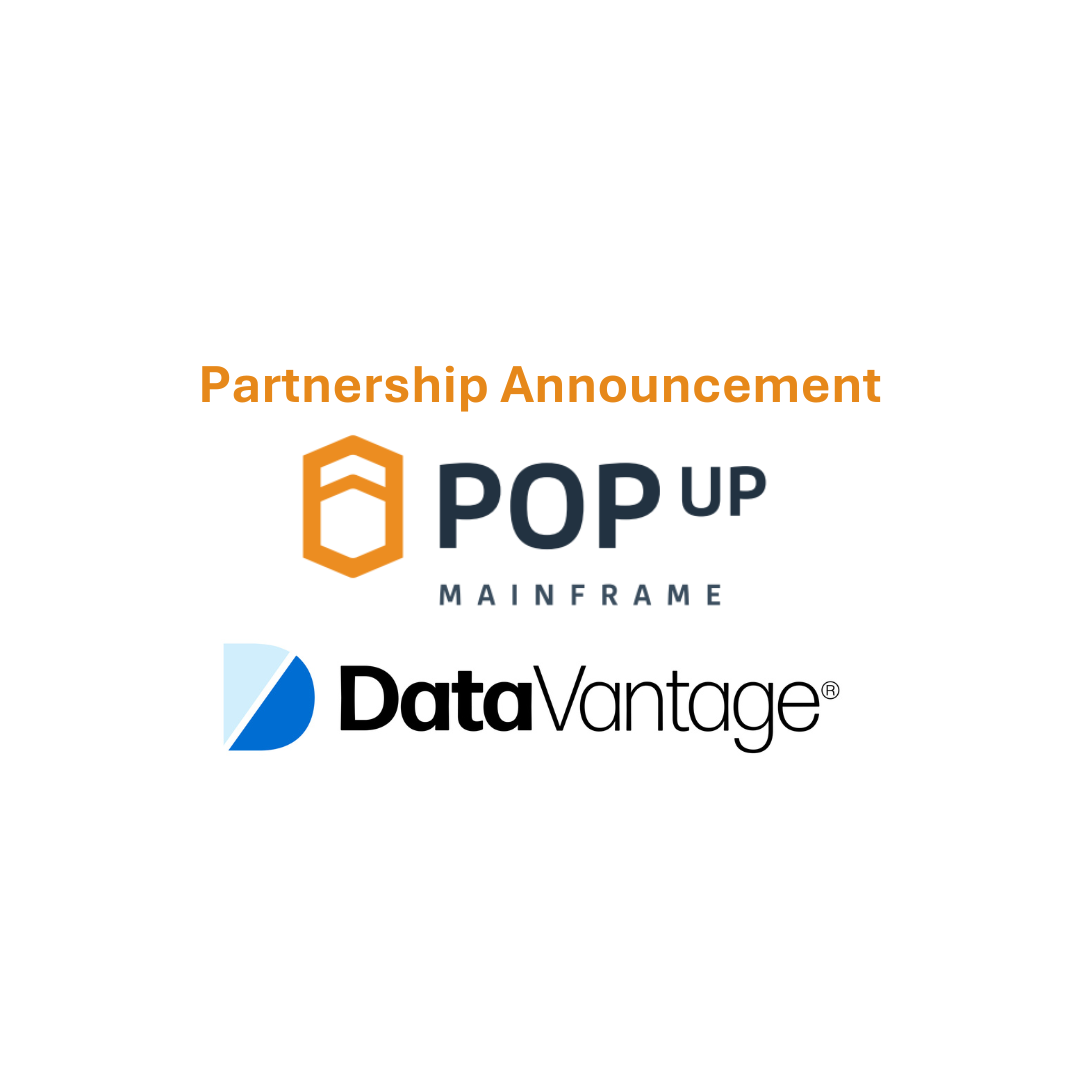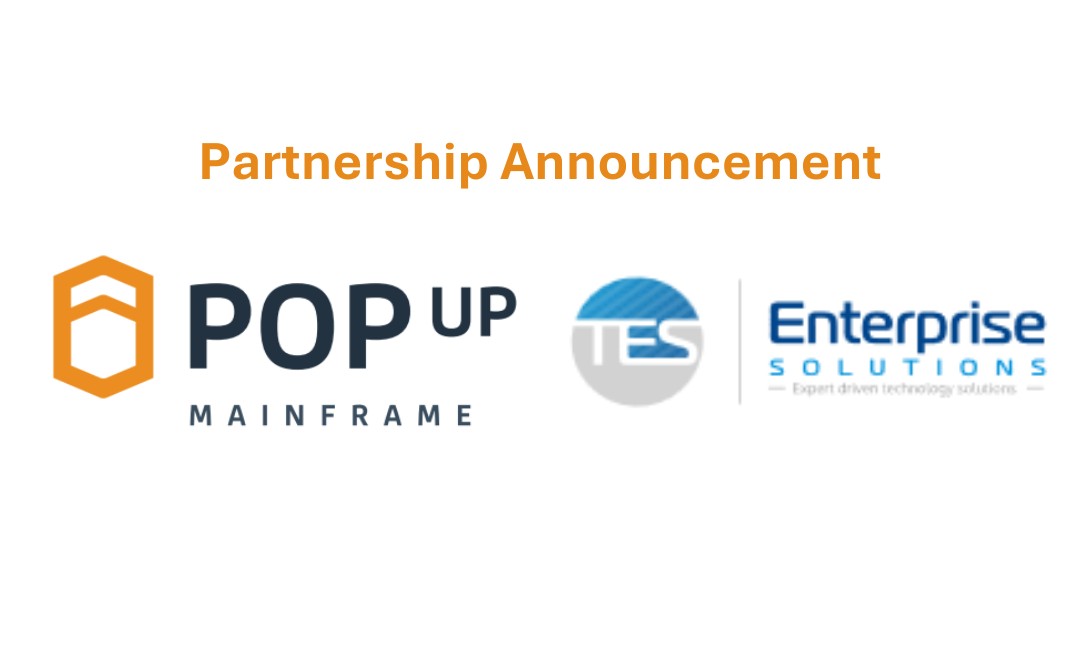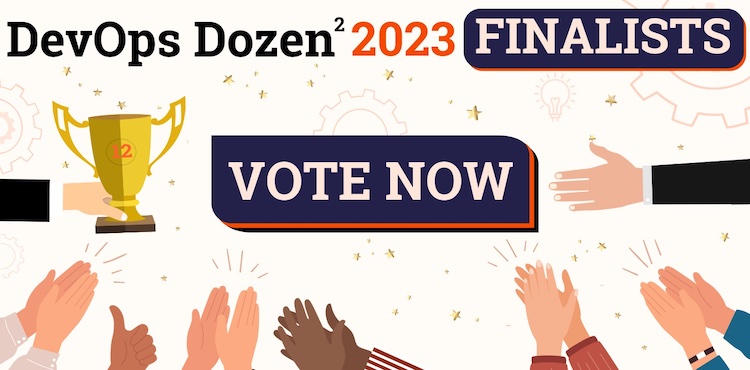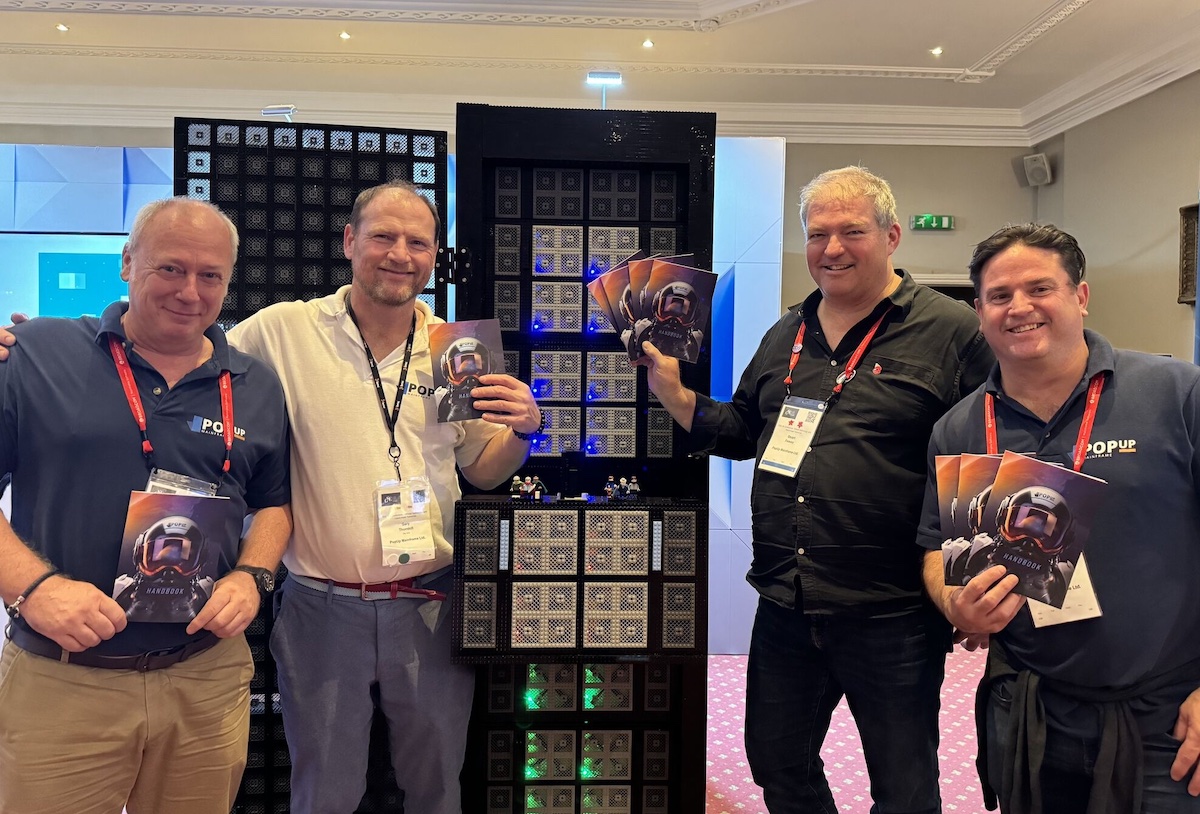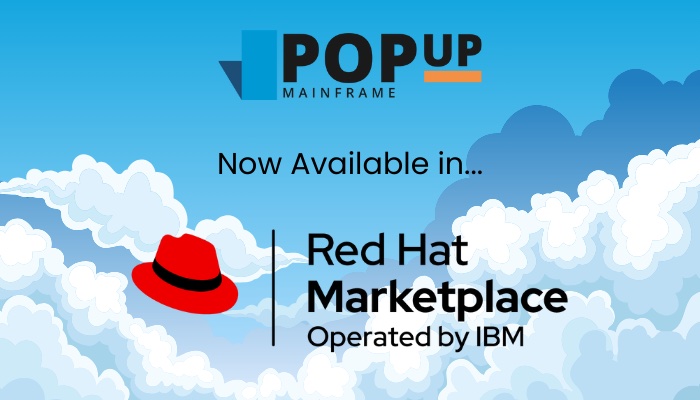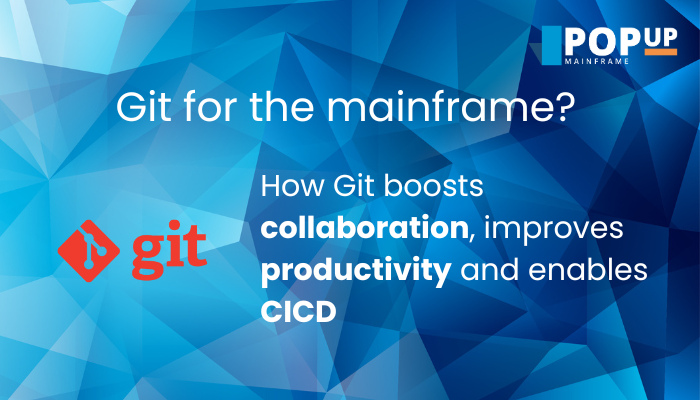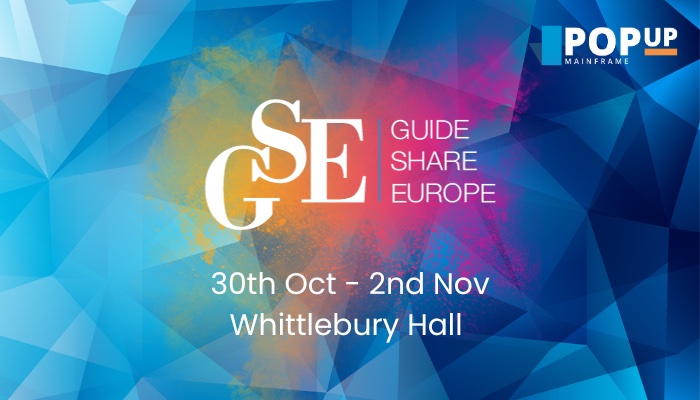Recently, PopUp Mainframe’s Stuart Ashby, lifelong mainframe learner and long-time GSUK volunteer, was a guest of Amit Sharma on an episode of the Tech Sharmit Podcast Series. Here are some edited highlights.
Continue readingMainframe Technology Vendors DataVantage and PopUp Mainframe Announce Strategic Partnership
Innovative Virtualized Mainframe Environment Benefits from Leading Data Masking and Compliance Technology
Continue readingPopUp Mainframe Community Newsletter September
We’ve just sent out another newsletter to our subscribers. In case you missed it, we’ve included it in full, here on the blog site. Read on…
Continue readingPopUp Mainframe announces TES Enterprise Solutions partnership
We’ve just announced a new strategic partnership with a market-leading solution provider. Read the press release in full.
Continue readingDevOps Dozen 2023 – Finalists!
We are very proud to announce that PopUp Mainframe has been listed as a finalist in 2 categories at the DevOps Dozen Awards 2023!
This recognition is particularly special to us as we are a very small, very young company, competing against some established players in the mainframe space.
We are finalists in the categories
- Best DevOps for Mainframe Solution
- Best New DevOps Tools/Service Provider
GSE UK Conference 2023 – Photos!
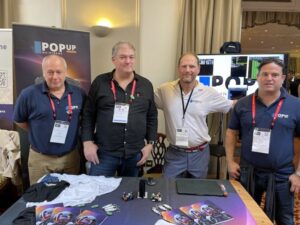 The UK PopUp team (or “PopStars” as we call ourselves) attended the GSE conference at Whittlebury Park from 30th Oct – 2nd Nov 2023. It was a very well-attended event, brimming with mainframe enthusiasts, and copious deep discussions on all aspects of mainframe.
The UK PopUp team (or “PopStars” as we call ourselves) attended the GSE conference at Whittlebury Park from 30th Oct – 2nd Nov 2023. It was a very well-attended event, brimming with mainframe enthusiasts, and copious deep discussions on all aspects of mainframe.
Thank you to the organisers, it was well run and enjoyed by all.
Legal & General – PopUp Mainframe driving Pensions Application Transformation
There were many highs across the four day event – the best was probably our founder, Gary Thornhill, joining one of our customers on stage to present their story.
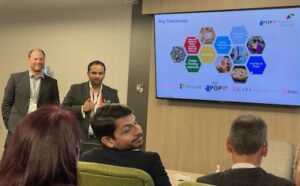 Vamsi Bhogireddy and Javeed Miyandad from L&G shared how they transformed their pensions application with the developer experience at the heart of the project.
Vamsi Bhogireddy and Javeed Miyandad from L&G shared how they transformed their pensions application with the developer experience at the heart of the project.
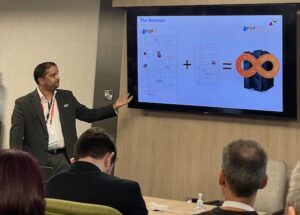 Using PopUp Mainframe to provide ephemeral z/OS instances in Azure, they reduced development cycle times with purpose-built, pre-configured tooling, driving pipeline automation and agility… whilst increasing the quality of deliverables.
Using PopUp Mainframe to provide ephemeral z/OS instances in Azure, they reduced development cycle times with purpose-built, pre-configured tooling, driving pipeline automation and agility… whilst increasing the quality of deliverables.
What else we got up to
The team were joined by a brand new addition to the PopUp team – ‘mini PopStars’ in the form of lego minifigures.
The ‘mini PopStars’ got to meet their idol – the human-sized lego z16.
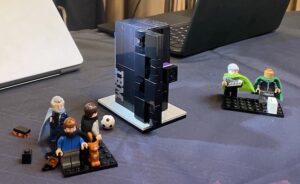
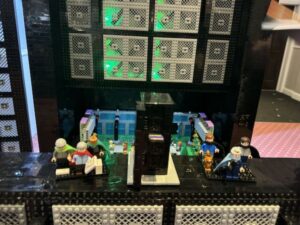
The PopUp team got up close and personal with a Formula 1 car.
We even let the ‘mini PopStars’ have a go at driving!
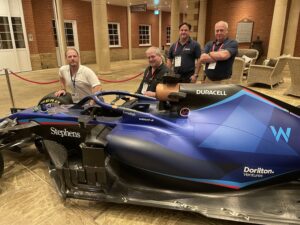
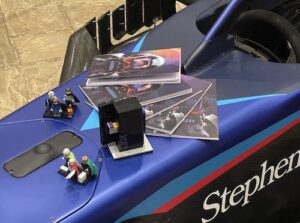
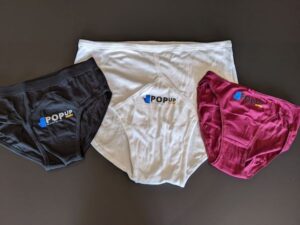
Our PopUp pants were a big hit and were snapped up quickly. If you missed out on a pair this time, come along to a future event for some more unique merchandise.
 GSE attendees were lucky to be the first people to get their hands on our brand new PopUp Handbook.
GSE attendees were lucky to be the first people to get their hands on our brand new PopUp Handbook.
The Handbook is your guide to getting the most from PopUp on your mainframe modernisation journey. It covers the future of mainframe, how to eat the elephant of mainframe modernisation, shift left testing, increasing agility, accelerating batch testing and many more topics.
Read The PopUp Handbook here. If you want your own copy, join us at one of our upcoming events.
We loved GSE 2023 and can’t wait for next year!
PopUp is now listed on Red Hat Marketplace
We are thrilled to announce that in addition to our longstanding presence on the Azure Marketplace, PopUp Mainframe is now also available via the Red Hat Marketplace.
PopUp can be up and running on any x86 hosted environment in minutes… both on premises and in the cloud.
PopUp Mainframe has been certified to meet Red Hat standards of interoperability, security, and life cycle management when deployed on the Red Hat OpenShift platform.
Visit Red Hat Marketplace to download PopUp today!
Git for the mainframe? How Git boosts collaboration, improves productivity and enables CICD
Git is everywhere in the world of distributed applications, but not yet for mainframe.
Should you consider Git for your mainframe? Why?
Git is excellent at facilitating and accelerating collaboration for software teams. People with a distributed background already know this, but some of us are resisting a bit in the mainframe world.
Git is a distributed version control system which can store not just code, but nearly everything related to software development – including test packs, data, documentation, configuration and more. It is a common repository which can be shared across teams. This helps to break down silos between teams, as it means that everyone can access what they need and work together more effectively.
Why embrace Git?
- Work with teams more easily as you can simply give them access to see the source code for your projects that they need to see. Collaboration is not shut down like it is when they don’t have a hope of getting access to your code.
When a change is made to part of your system which impacts another system, there is no need to send the edited code/new specifications across to other teams. Instead, you can inform them that there has been a change, share a link to where the new version is in Git, and they immediately have visibility. Pipelines can be shared between teams so when Team 1 edits an artefact e.g. copybook, Team 2’s API can be automatically rebuilt with the updated version.
- Git liberates developers to work in a more agile way which results in changes being released faster. For example, using Feature Branches each person can perform their work at their own pace without affecting anyone else, and merge it to the Main Branch when its ready. This encourages small and frequent code check ins and ultimately a more agile way of working.
- Git is the standard for version control across industries and systems. Even if your existing mainframe team members need upskilling to use Git, new joiners to your team will likely already have the skills and be productive quickly. Git (as well as the agile processes Git enables) can also be an attractive pull for people to join your company as Git skills will be key for most developers in future.
- Git works extremely well with continuous integration (CI) and continuous delivery (CD) pipelines. Git integrates by default with all CI and CD tools, which enables you to build mature automation and streamline your entire SDLC. Pipelines provide consistency and traceability, ensuring that every piece of code goes through the same rigorous validation and quality checks. For example, your pipeline could include mandatory code scanning for security standards.
- Automate testing for higher quality changes. Streamline processes by creating automated test packs for unit as well as system and integration testing, which are associated with the code and run in pipelines. Test packs can be stored in Git alongside the code so they are always available and its easy to keep them in sync. Once you have completed your development, you can kick off an automated pipeline to do testing and deploy to the next environment. No need for slow, error-prone, manual testing.
- Reduce handovers. No need to create a ticket to another team since the automated pipeline does the build, testing and deployment. There is no information lost/misunderstood, and no time wasted on ticket systems/calls to discuss the work/waiting for another team to be ready.
- Empower the dev team to make infrastructure changes. No need to raise a ticket and wait on another team. For example, if you need to make a database change, add the DDL scripts to your Git repo and it will be included in the pipeline, tested and deployed. Terraform patterns and other infrastructure definitions can be incorporated into a pipeline.
- Since Git is standard across most platforms, third party products are increasingly providing Git integration out of the box. This reduces the overheads in setting up a new system for your team.
Git is by no means the only distributed version control system available, but Git is regarding by many as the best, easiest to use, and the most effective.
If you want to talk about how to migrate from your existing SCM to Git, how Git can boost your dev and test practices, and hear some client stories, contact us.
GSE UK Conference – Nov 2023
We are excited to be attending the GSE UK Conference 2023 from 30th Oct – 2nd Nov in Whittlebury Hall.
We will be co-presenting a session with one of our customers, Legal & General, on Tuesday 31st October.
GSE Session: Legal & General – PopUp Mainframe driving Pensions Application Transformation
 PopUp Mainframe are working in partnership with Legal & General to transform their pension application’s development & test environments to deliver automated CI/CD capabilities.
PopUp Mainframe are working in partnership with Legal & General to transform their pension application’s development & test environments to deliver automated CI/CD capabilities.
They use a combination of market leading mainframe development tools and open-source DevOps tools which are fully integrated with PopUp Mainframe z/OS hardware emulation and the market leading data masking and data storage virtualization solutions from Delphix. Combined, these technologies provide a revolutionary, crafty leap forward into ground-breaking, data compliant DevOps velocity across the entire mainframe development lifecycle.
The GSE conferences are a hub for all things mainframe and will feature more than 250 technical sessions on a wide range of topics, including security, CICS, Db2, and modernisation to name a few. Attendees will have the opportunity to network with others and gain new knowledge, tips and guidance on different products and ideas.
Don’t miss the opportunity to meet and talk with lots of like-minded mainframe professionals in person at Whittlebury Hall.
About GSE UK
GSE UK is a leading mainframe conference offering a wide range of sessions on all mainframe topics. It provides over 200 hours of technical training from IBM, other vendors and from GSE members themselves.
Modern Mainframe Tools – Your Next Superpower?
Some people say that to modernise your mainframe you need to migrate onto a different platform. We don’t subscribe to this view. We know that the mainframe is still the most highly performant and secure computer system available.
To be competitive, organisations don’t need to migrate off the mainframe. However they do need to ensure their mainframe teams are productive and mainframe is not a bottleneck to change.
